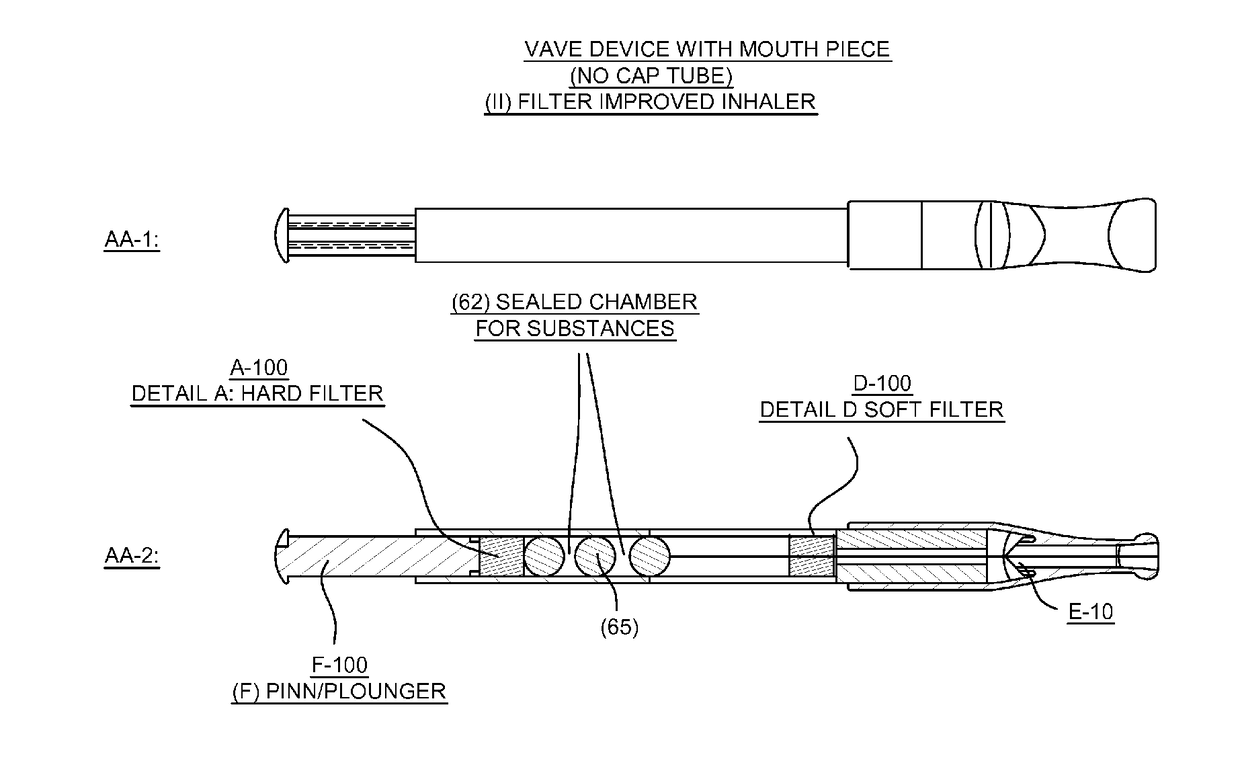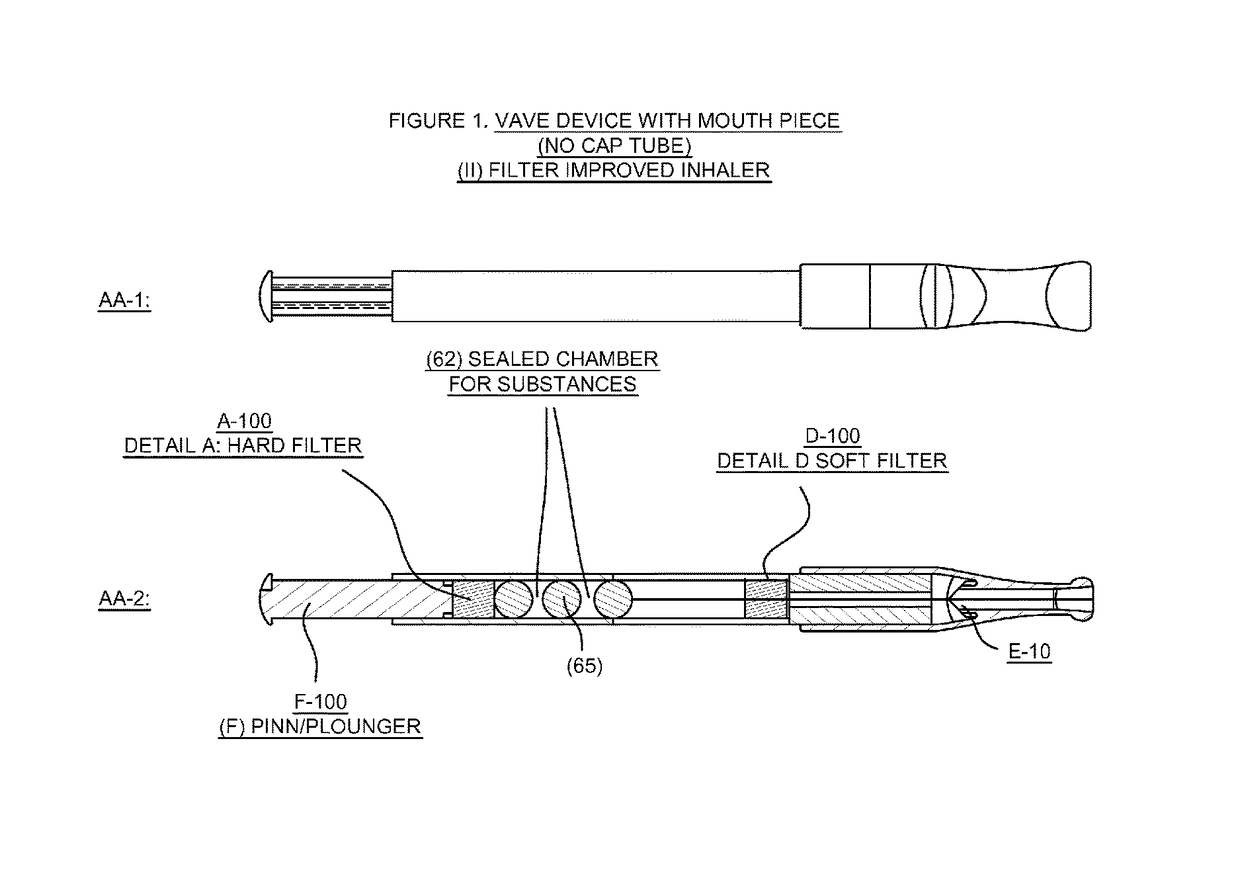Device with compositions for delivery to the lungs, the oral mucosa and the brain
- Summary
- Abstract
- Description
- Claims
- Application Information
AI Technical Summary
Benefits of technology
Problems solved by technology
Method used
Image
Examples
example 1
[0267]The compositions and methods of the invention will be tested in relevant animal models of inflammatory lung diseases, including models of acute lung injury and COPD.
[0268]Various dosages of CBD will be delivered to the lungs by use of passive inhaler devices comprising different dosages of CBD and a carrier to identify the optimal dosage range.
example 2
[0269]In some applications, nicotine may be used in the inhaler. Nicotine may be delivered in three forms with tobacco flavours:
[0270]A: As dried fermented tobacco leaves in cut form (this form will provide a stimulus to the brain similar to that of natural tobacco flavours as seen when smoking)
[0271]B: As heat (247 degree Celcius) or high pressure destilled extract made by a 7 phase distillation process, wherein the extract comprises nicotine and possibly some tobacco flavours.
[0272]C: As a blended mass of tobacco leaves, extracted by nut oil, tasteless oil or propylene glycol. In some instances it may be washed with CO2 or ethanol in the aromaextration process. The composition is mixed with the composition of B), and leaf parts are removed by pouring through a cloth or the like. The resulting fluid will be uniform and volatile and able to release its natural tobacco flavours
example 3
[0273]CBD extraction from Cannabis plants is done similar to nicotine extraction from tobacco as described in example 2.
[0274]CBD is extracted at 250 degrees Celcius.
[0275]Cannabidiol (CBD) has a boiling point of: 160-180 degrees C. / 320-356 degrees Fahrenheit
[0276]CBD may also be extracted by other methods, such as CO2 extraction, Ethanol or olive oil extraction:[0277]CO2 extraction. The supercritical (or subcritical) CO2 method uses carbon dioxide under high pressure and extremely low temperatures to isolate, preserve, and maintain the purity of the medicinal oil. This process requires expensive equipment and a steep operational learning curve. But, when done well the end product is safe, potent, and free of chlorophyll.[0278]Ethanol. High grade grain alcohol can be used to create high quality cannabis oil appropriate for vape pen cartridges (E-cigarettes using heating) and many other products. But this extraction method destroys the plant waxes, which may have health benefits that...
PUM
| Property | Measurement | Unit |
|---|---|---|
| Temperature | aaaaa | aaaaa |
| Temperature | aaaaa | aaaaa |
| Temperature | aaaaa | aaaaa |
Abstract
Description
Claims
Application Information
 Login to View More
Login to View More - R&D
- Intellectual Property
- Life Sciences
- Materials
- Tech Scout
- Unparalleled Data Quality
- Higher Quality Content
- 60% Fewer Hallucinations
Browse by: Latest US Patents, China's latest patents, Technical Efficacy Thesaurus, Application Domain, Technology Topic, Popular Technical Reports.
© 2025 PatSnap. All rights reserved.Legal|Privacy policy|Modern Slavery Act Transparency Statement|Sitemap|About US| Contact US: help@patsnap.com



